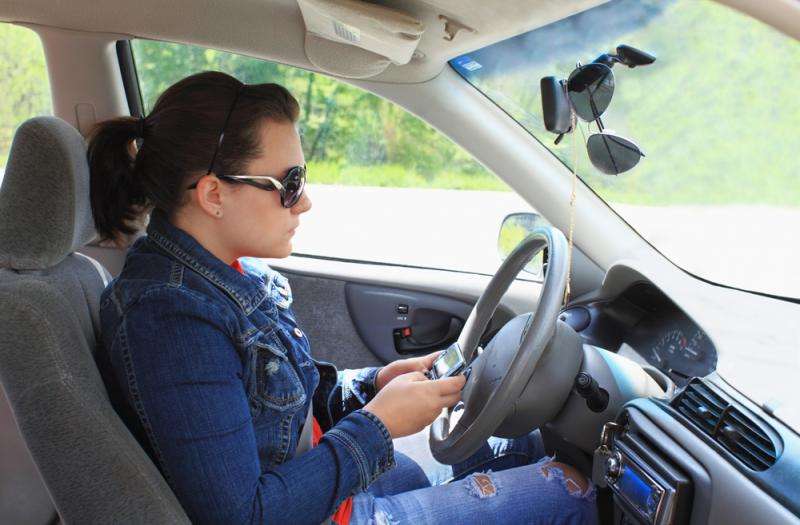Cell phone use prevalent among drowsy drivers, distracted drivers

Despite warnings, many of us continue to drive distracted. We pick up the cell phone to take that one important call or send a quick text.
But a recent Rutgers study of a sample of 110 undergraduate commuters found drivers talk on the cell phone even while drowsy. One in six of these drivers – ranging in age from 18 to 25—reported they had used their phones while they were sleepy behind the wheel.
The initial findings appear significant because few studies have compared cell phone use to drowsiness while driving, according to Derek Shendell, co-director of the Center for School and Community-based Research and Education and associate professor at Rutgers School of Public Health.
"Undergraduates can get sleep deprived for various reasons and then, on top of that, they may be the designated driver for friends who drink. Maybe they've taken prescription meds or had a drink themselves but time has passed—and they remain below the legal limit," said Shendell.
The study also found four of five, or 80 percent, surveyed undergraduate student used a cell phone with the speaker on while driving. Additionally, the majority of respondents, about two-thirds, admitted they still held the phone with one hand using the speaker mode while driving.
But traffic safety advocates have stated even hands-free devices can be a distraction while driving.
"Until every vehicle has properly functioning Bluetooth with simple operation, the speaker phone mode is not helping," Shendell said.
Drivers 25 and under – the age group in the survey – are particularly at risk because they are most likely to report having fallen asleep behind the wheel and most likely to text while driving than any other age group.
The Rutgers study is "more public health research evidence consistent with existing national data," he said.
For example, a study by AAA Foundation for Traffic Safety released in April found that 70 percent of nearly 2,500 drivers surveyed talked on the cell phone while driving.
In 2014, 3,179 people died in crashes involving distracted drivers, a 9 percent increase from the previous year, according to the National Highway Traffic Safety Administration (NHTSA). The federal government identifies distracted driving as texting, using a cell phone, eating or drinking, talking to passengers, grooming, reading, watching a video, or adjusting the radio or MP3 player.
The NHTSA has long campaigned against texting and driving, targeting young motorists in particular. It will now include drowsy driving in its campaign to promote roadway. In March, the agency launched an initiative to curtail drowsy driving nationwide. You will likely see the ads later this year. Sleepiness behind the wheel can have the same effects as drunk driving because it can slow down reaction time and impair judgement.
Carpool Karaoke maybe the rage these days, made popular by late night host James Corden, but the majority of respondents in the Rutgers survey – about three in four – reported singing in the car a distraction while driving drowsy – a finding that surprised Shendell and undergraduate students working with him.
More information: Investigating Distracted Driving Among Undergraduate Students in New Jersey. apha.confex.com/apha/143am/web … ram/Paper324546.html

















